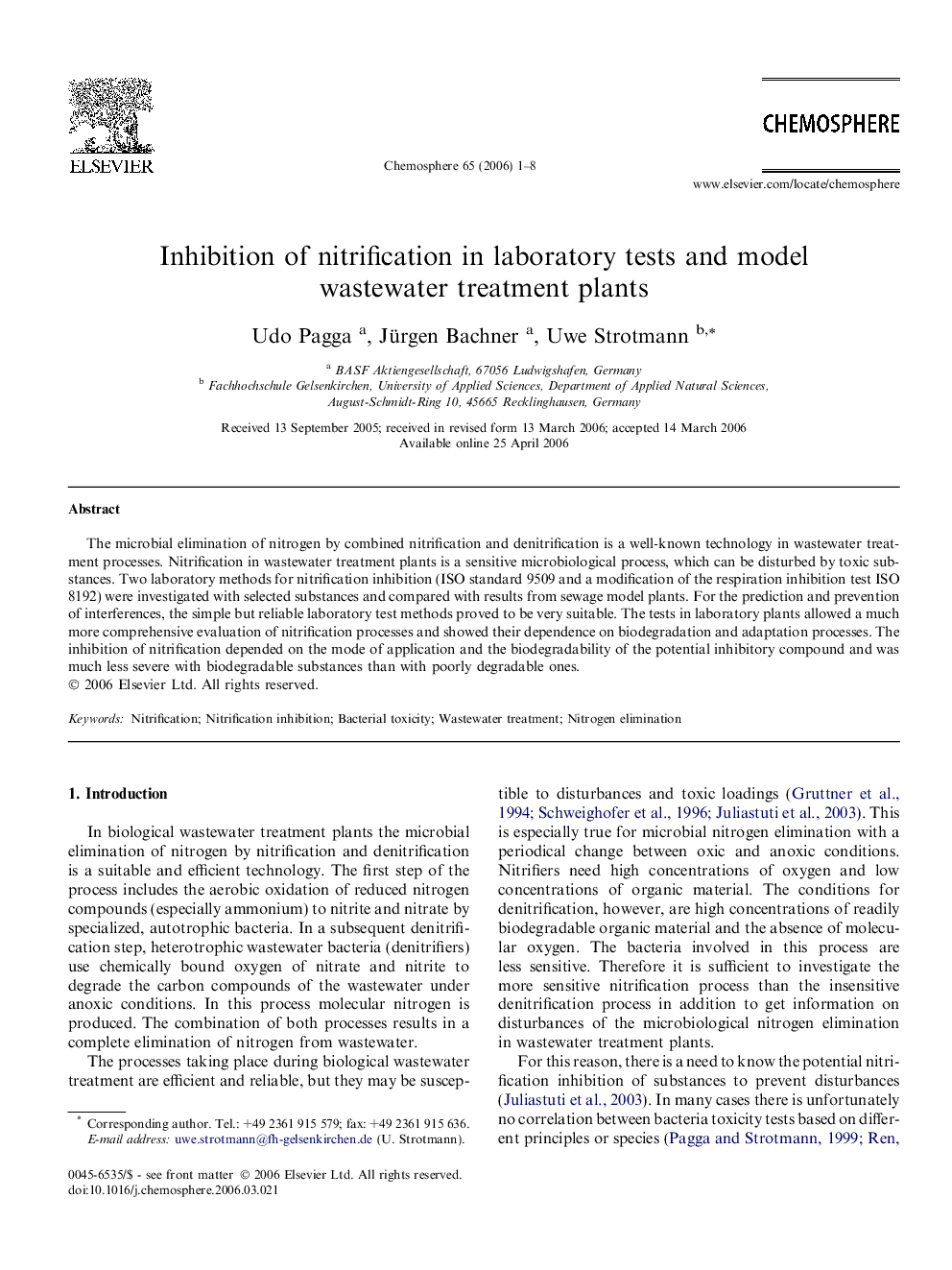| Article ID | Journal | Published Year | Pages | File Type |
|---|---|---|---|---|
| 4415786 | Chemosphere | 2006 | 8 Pages |
Abstract
The microbial elimination of nitrogen by combined nitrification and denitrification is a well-known technology in wastewater treatment processes. Nitrification in wastewater treatment plants is a sensitive microbiological process, which can be disturbed by toxic substances. Two laboratory methods for nitrification inhibition (ISO standard 9509 and a modification of the respiration inhibition test ISO 8192) were investigated with selected substances and compared with results from sewage model plants. For the prediction and prevention of interferences, the simple but reliable laboratory test methods proved to be very suitable. The tests in laboratory plants allowed a much more comprehensive evaluation of nitrification processes and showed their dependence on biodegradation and adaptation processes. The inhibition of nitrification depended on the mode of application and the biodegradability of the potential inhibitory compound and was much less severe with biodegradable substances than with poorly degradable ones.
Related Topics
Life Sciences
Environmental Science
Environmental Chemistry
Authors
Udo Pagga, Jürgen Bachner, Uwe Strotmann,
